Explore the best of English and American automotive heritage. Join us on a journey through iconic cars and rich history🚗🇬🇧🇺🇸
Last active 2 hours ago
Don't wanna be here? Send us removal request.
Text

Thank you to everyone who got me to 1000 likes!
#1000 likes#tumblr milestone#thank you#transatlantic torque#brits and yanks on wheels#cars#vehicle#old cars#companies#retro cars#automobile#brands#american cars
2 notes
·
View notes
Text




🇬🇧 In 1999, the legendary British specialist automaker Reliant Motor Company introduced the Robin Hatchback — a fresh update to their iconic three-wheeler, designed to bring new life to the beloved classic. With a modernized body style and practical hatchback design, the new Robin aimed to offer more everyday usability while keeping the quirky spirit that made it famous.
🚘 The 1999 Robin featured improved aerodynamics, updated interior comforts, and a slightly refined fiberglass body. It remained lightweight and economical, continuing Reliant’s tradition of creating efficient, accessible vehicles. The hatchback design provided extra cargo space, making the Robin even more practical for daily use.
⚡ Reliant Motor Company, based in Tamworth, Staffordshire, had built a reputation over decades for its lightweight and uniquely British vehicles, becoming especially famous for three-wheelers like the Robin. However, the company's era was nearing its end. Production of the Reliant Robin officially ceased in 2001, marking the close of an important chapter in British automotive history. The Robin Hatchback remains one of the last symbols of Reliant’s innovative spirit.
Transatlantic Torque: Brits & Yanks on Wheels!
#transatlantic torque#brits and yanks on wheels#cars#old cars#retro cars#vehicle#brands#companies#automobile#american cars#made in england#reliant#reliant robin#England#hatchback#commercial#1990s nostalgia#old car#classic cars#exotic cars#car photography#tamworth#staffordshire#aerodynamics#interiors#british automotive#automotive#automotive history#vechicle#auto
11 notes
·
View notes
Text

It's my 1 year anniversary on Tumblr 🥳
1 note
·
View note
Text

🇺🇲 February 14, 1924 – A pivotal day in automotive history! Walter Chrysler was officially elected president of the Maxwell Automobile Company, setting the stage for one of the most influential car brands in America.
🔧 By 1921, Maxwell was struggling, and Chrysler, a former Buick executive, saw an opportunity. He took controlling interest in the company and worked to revitalize it.
🚘 In 1925, Maxwell was phased out, and all assets were merged into a brand-new company—the Chrysler Corporation. The first Chrysler-branded car had already debuted in 1924, featuring advanced engineering for the time, like a high-compression engine and four-wheel hydraulic brakes. This bold move laid the foundation for decades of automotive innovation.
🏁 From this moment on, Chrysler would go on to challenge the biggest names in the industry, eventually growing into one of the Big Three automakers in Detroit.
Transatlantic Torque: Brits & Yanks on Wheels!
#transatlantic torque#brits and yanks on wheels#cars#old cars#retro cars#vehicle#brands#companies#automobile#american cars#chrysler voyager#chrysler cirrus#walter chrysler#daimler chrysler#chrysler#detroit#michigan#maxwell motors#sedan#american auto#big three#buick#buick regal#buick riviera#buick lesabre#merry chrysler#car brands#old car#classic cars#classic car
13 notes
·
View notes
Text

🇬🇧 Introduced in 1981, the Triumph Acclaim holds a unique place in automotive history—it was not only the last car to wear the Triumph badge but also the first British car built with Japanese engineering. A product of a partnership between British Leyland (BL) and Honda, the Acclaim was based on the Honda Ballade, marking the beginning of British-Japanese automotive collaboration.
🚘 Design & Engineering
The Acclaim featured a 1.3L Honda CVCC engine, producing 70 hp, paired with either a 5-speed manual or a 3-speed automatic transmission. While not a performance powerhouse, it was praised for fuel efficiency, reliability, and smooth handling—a stark contrast to many of BL’s previous offerings.
🏁 The End of Triumph
Production ended in 1984, and with it, the Triumph brand was retired. The Acclaim’s successor, the Rover 200 Series, continued the BL-Honda partnership, but the Triumph name never returned to mainstream production.
Transatlantic Torque: Brits & Yanks on Wheels!
#transatlantic torque#brits and yanks on wheels#cars#old cars#retro cars#vehicle#brands#companies#automobile#british motor corporation#british cars#triumph#acura#honda#sedan#acclaim#rover group#mg rover#made in england#old car#classic car#classic cars#car show#car#british automotive#automotive#automotive history#auto#american cars#great britain
12 notes
·
View notes
Text

📅 On February 4, 1922, Ford Motor Company made a game-changing decision by purchasing the struggling luxury automaker Lincoln for $8 million. At the time, Ford was losing market share to General Motors, which offered a variety of models.
👥 Edsel Ford (sitting, left) played a key role in convincing his father, Henry Ford (standing, left), to acquire Lincoln from founder Henry Leland (standing, right) and his son Wilfred (sitting, right). Leland, who had previously co-founded Cadillac before selling it to GM, was a pioneer in precision manufacturing and had founded Lincoln in 1917 to produce Liberty aircraft engines during World War I.
🏆 This strategic move not only saved Lincoln but also helped Ford break into the luxury market, shaping the brand’s future. Under Edsel Ford’s leadership, Lincoln became known for elegant design and engineering excellence, paving the way for legendary models like the Lincoln Zephyr and the Continental.
Transatlantic Torque: Brits & Yanks on Wheels!
#transatlantic torque#brits and yanks on wheels#cars#old cars#retro cars#vehicle#brands#companies#automobile#american cars#ford motor co#ford edsel#lincoln#lincoln continental#lincoln zephyr#henry leland#acquisition#deal#business#manufacturing#old car#classic cars#classic car#car#car lovers#businesses#corporations#detroit#michigan#american auto
7 notes
·
View notes
Text

🇺🇸 Introduced in 1989 for the 1990 model year, the Plymouth Laser was a sleek and sporty coupe that was part of the Diamond-Star Motors (DSM) partnership between Chrysler and Mitsubishi. Built alongside the Eagle Talon and Mitsubishi Eclipse, the Laser was Plymouth’s attempt to break into the performance car market with a stylish and affordable option.
⚙️ The Laser came with three engine options, ranging from a 1.8L SOHC 92 hp to a powerful 2.0L DOHC producing 190 hp. The turbocharged models were particularly quick for their time, competing with Japanese sports cars of the era.
✨ The design featured pop-up headlights, a sleek aerodynamic shape, and bold graphics, making it stand out in the growing compact sports coupe segment. The interior was driver-focused, with an available digital instrument cluster and premium trim options.
📉 Despite its potential, the Plymouth Laser was discontinued in 1994, as Plymouth struggled to define its identity.
#transatlantic torque#brits and yanks on wheels#cars#old cars#retro cars#vehicle#brands#companies#automobile#american cars#chrysler#detroit#michigan#Plymouth#walter chrysler#old car#classic cars#sport cars#luxury cars#Mitsubishi#plymout laser#eagle#y2k aesthetic#y2k#dodge#daimler chrysler#merry chrysler#american auto#automotive#automobiles
12 notes
·
View notes
Text

👉 Follow our Instagram!
🚗🇬🇧🇺🇸 Explore the best of English and American automotive heritage with Transatlantic Torque. Join us on a journey through iconic cars and rich history.
#transatlantic torque#brits and yanks on wheels#cars#old cars#retro cars#vehicle#brands#companies#automobile#american cars#rover#oldsmobile#buick#chrysler#Plymouth#ford#amc#rambler#hudson#eagle#jeep#jaguar#vauxhall#reliant#aston martin#austin#british motor corporation#british cars#british leyland#hummer
2 notes
·
View notes
Text








🇬🇧🇩🇪 The Vauxhall Senator was a flagship luxury sedan that embodied British elegance with German engineering. Introduced in 1978 and produced until 1994, it was a rebadged version of the Opel Senator, tailored for the UK market. Known for its spacious interiors and advanced features, the Senator became a popular choice among executives and police forces alike.
⚙️ Under the hood, it offered a range of powerful engines, from a 2.5L inline-six to the range-topping 3.0L version producing up to 200 horsepower. This, combined with rear-wheel drive and a smooth ride, made the Senator a symbol of performance and comfort.
✨ The second generation, launched in 1987, introduced modernized styling, improved aerodynamics, and cutting-edge technology like ABS and electronic fuel injection. While production ceased in 1994, the Senator left a lasting impression as one of Vauxhall’s most iconic luxury vehicles.
#transatlantic torque#brits and yanks on wheels#cars#old cars#retro cars#vehicle#brands#companies#automobile#american cars#british cars#vauxhall#senator#opel#buick#general motors#detroit#michigan#luton#united kingdom#made in england#england#english cars#sedan#engineering#old car#classic cars#car photography#cool cars#super cars
13 notes
·
View notes
Text



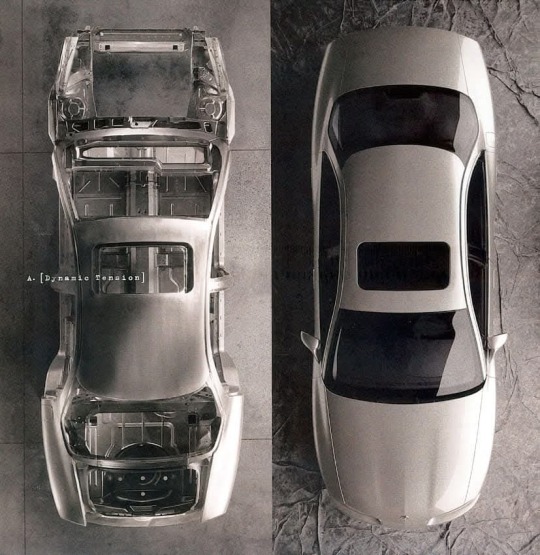





🇺🇸 Introduced in 1994, the Oldsmobile Aurora was a bold step into the future for General Motors’ oldest brand, founded in 1897. Oldsmobile was a pioneer in the automotive industry, known for innovations like the first mass-produced car (the Curved Dash Runabout) and the Rocket V8 engine.
✨ The Aurora, designed as a sleek and luxurious sports sedan, featured a 4.0L V8 engine derived from Cadillac’s Northstar, delivering 250 horsepower with smooth performance. Its futuristic design, with no Oldsmobile badging, symbolized a fresh start and a vision for the brand's revival in the 1990s.
📜 Despite its success as a flagship model, production ended in 2003, just before Oldsmobile itself was retired. The Aurora remains a symbol of innovation, ambition, and the rich legacy of one of America’s most iconic automakers.
#transatlantic torque#brits and yanks on wheels#cars#old cars#retro cars#vehicle#brands#companies#automobile#old car#oldsmobile#american cars#general motors#Lansing#michigan#detroit#aurora#muscle car#oldsmobile cutlass#oldsmobile 98#cadillac#buick#sedan#luxury cars#classic cars#car#1990s#y2k#futuristic#american auto
6 notes
·
View notes
Text

🎊 Thank you @ruban94 and everyone who got me to 250 reblogs!

🚗🦃 "Going Home for Thanksgiving" — a 1927 Richfield Gasoline ad that beautifully reflects the excitement of holiday road trips and the promise of reliable travel during the golden age of motoring!
🛢️ Richfield Oil Corporation, founded in 1905 in California, became a major player in fueling America’s growing love for automobiles. Known for its innovative marketing, Richfield built its reputation on offering “clean, powerful” gasoline tailored for the modern engines of the 1920s.
📜 By the time this 1927 ad was published , car ownership had skyrocketed, and brands like Richfield played a pivotal role in enabling long-distance travel—a novel concept for many families of the era. Richfield stations became iconic landmarks, offering high-quality fuel to the increasingly popular vehicles of brands like Ford, Chevrolet, and Buick.
🍂 This ad celebrates not just Thanksgiving but the freedom and connection cars brought to American families. Imagine loading up the family car, cruising down scenic autumn roads, and knowing Richfield would get you home safe and sound. It's a slice of Americana steeped in nostalgia and innovation.
What’s your favorite holiday road trip memory? 🚙💨
#250 reblogs#tumblr milestone#thank you#transatlantic torque#brits and yanks on wheels#cars#retro cars#brands#companies#automobile#american cars#richfield#old cars#richfield oil company#vehicle#gasoline#engineering#los angeles#engine#gas#california#american auto#oil companies#thanksgiving#fuel#commercial#automotive#family#gas station#buick
24 notes
·
View notes
Text

🚗🦃 "Going Home for Thanksgiving" — a 1927 Richfield Gasoline ad that beautifully reflects the excitement of holiday road trips and the promise of reliable travel during the golden age of motoring!
🛢️ Richfield Oil Corporation, founded in 1905 in California, became a major player in fueling America’s growing love for automobiles. Known for its innovative marketing, Richfield built its reputation on offering “clean, powerful” gasoline tailored for the modern engines of the 1920s.
📜 By the time this 1927 ad was published , car ownership had skyrocketed, and brands like Richfield played a pivotal role in enabling long-distance travel—a novel concept for many families of the era. Richfield stations became iconic landmarks, offering high-quality fuel to the increasingly popular vehicles of brands like Ford, Chevrolet, and Buick.
🍂 This ad celebrates not just Thanksgiving but the freedom and connection cars brought to American families. Imagine loading up the family car, cruising down scenic autumn roads, and knowing Richfield would get you home safe and sound. It's a slice of Americana steeped in nostalgia and innovation.
What’s your favorite holiday road trip memory? 🚙💨
#transatlantic torque#brits and yanks on wheels#cars#old cars#retro cars#vehicle#brands#companies#automobile#american cars#richfield#richfield oil company#gasoline#engine#engineering#california#los angeles#oil companies#gas#fuel#american auto#automotive#thanksgiving#family#commercial#buick#chrysler#gas station#old car#classic cars
24 notes
·
View notes
Text

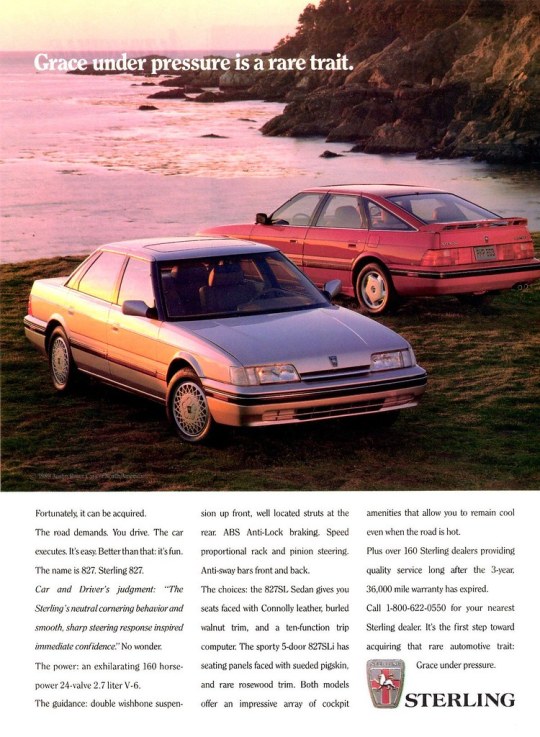

🇬🇧🇯🇵 The Sterling brand had a fleeting existence, but its story is a fascinating fusion of British craftsmanship and American ambition. Created as the U.S. marketing name for automobiles produced by Austin Rover Cars of North America (later Sterling Motor Cars), the brand represented a division of the UK’s Rover Group. Launched in 1987 through a joint venture between the Austin Rover Group (part of British Leyland Motor Corporation) and Honda, Sterling aimed to deliver British luxury to American roads.
🚘 Sterling cars were based on the Rover 800 Series, sharing platforms and components with Honda’s Acura Legend. This partnership allowed Sterling to benefit from Honda’s famed engineering reliability while adding a distinctly British touch through wood trim, leather interiors, and elegant styling.
🌟 The brand debuted with the Sterling 825, powered by Honda’s 2.5-liter V6 engine, followed by the Sterling 827, which featured a more powerful 2.7-liter V6. These models offered a compelling mix of performance, luxury, and affordability, catering to American buyers looking for an alternative to domestic and European vehicles.
📉 Despite a strong start, Sterling’s momentum was soon derailed by quality control issues, particularly with its British-manufactured components. Poor reviews and rising customer dissatisfaction tarnished the brand's reputation, causing sales to plummet. By 1991, just four years after its debut, Sterling exited the U.S. market. A strong British pound and mounting financial losses made a comeback impossible, even with a facelifted model and a planned coupe version on the horizon. When the closure was announced in August 1991, fewer than 2,000 units had been sold that year.
#transatlantic torque#brits and yanks on wheels#cars#old cars#retro cars#vehicle#brands#companies#automobile#british motor corporation#british cars#sterling#austin rover#rover group#rover v8#mg rover#mg motor#rover sd1#rover#british leyland#honda#rover 800#english cars#old car#classic car#automotive#american auto#automobiles#sterling 827#american cars
8 notes
·
View notes
Text

🚗✨ On This Day in Automotive History: November 23, 1864
🎉 Today marks the birth of Henry Bourne Joy, a key figure in the early American automotive industry and the longtime president of Packard Motor Car Company. Born in Detroit, Henry was the son of James Joy, the influential president of the Michigan Central Railroad—an upbringing that undoubtedly sparked his interest in transportation and innovation.
🚘 Henry’s journey into the world of automobiles began in 1902 during a trip to New York City. While there, he discovered a Packard automobile and was so impressed by its quality and craftsmanship that he purchased the only one available in town. This chance encounter led him to visit James Packard in Warren, Ohio, where Henry organized a group of investors to move the Ohio Automobile Company to Detroit, creating the legendary Packard Motor Car Company.
🌟 As president from 1909 and later chairman from 1916 to 1926, Henry Joy played a pivotal role in shaping Packard’s reputation for luxury and engineering excellence. Under his leadership, Packard became synonymous with elegance and innovation, producing some of the most prestigious vehicles of the era and competing with iconic brands like Cadillac and Lincoln.
🌍 Beyond cars, Henry Joy’s vision extended to national infrastructure. He was a passionate advocate for the development of transcontinental highways, most notably the Lincoln Highway—America’s first coast-to-coast road—paving the way for modern automotive travel.
🛠️ Packard’s famous slogan, “Ask the Man Who Owns One,” became a testament to the brand’s quality and Henry Joy’s relentless pursuit of perfection. His legacy remains a cornerstone of automotive history.
#transatlantic torque#brits and yanks on wheels#cars#old cars#retro cars#vehicle#brands#companies#automobile#american cars#packard#Henry Joy#detroit#old car#classic cars#cool cars#luxury cars#luxury#ask the man who owns one#commercial#american auto#automotive#heritage#lincoln highway#cadillac#lincoln#premium cars#classic car#car photography#car show
9 notes
·
View notes
Text

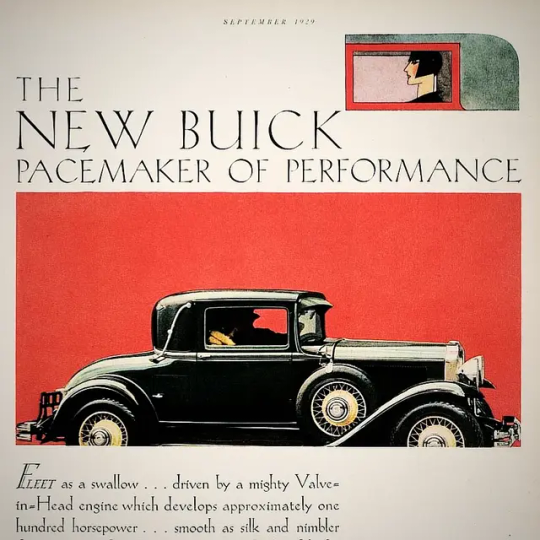
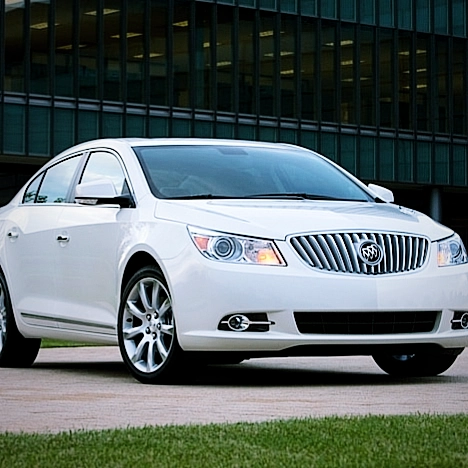
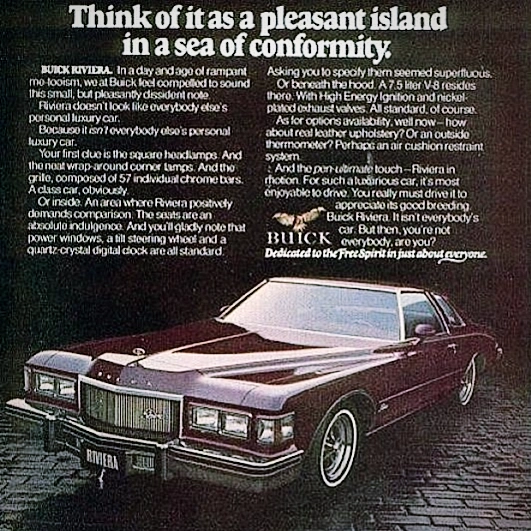
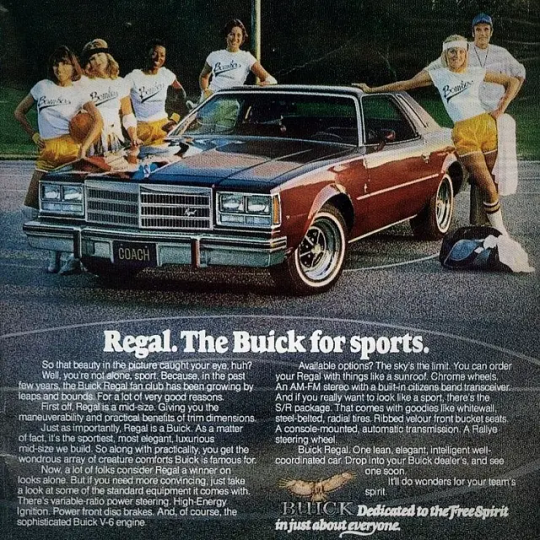

🇺🇸 Founded in 1899 by David Dunbar Buick, Buick Motor Company quickly became a pioneer in the American automotive industry. Starting in Detroit, Michigan, and later moving to Flint, Buick became one of the oldest and most respected American automobile brands, known for luxury, performance, and innovation.
💡 Buick set itself apart early on by introducing the revolutionary overhead valve engine. This design provided greater power and efficiency, making Buick one of the most reliable brands of its time. By 1908, Buick had become the best-selling car brand in the United States, a status that helped solidify its place in automotive history.
🏢 In 1908, Buick became the cornerstone for General Motors (GM), founded by William C. Durant. Buick's success helped finance GM’s expansion into other brands like Cadillac and Chevrolet.
🎖 Throughout the 1930s and 40s, Buick grew its reputation for luxury and elegance. Iconic models like the Buick Roadmaster and Buick Super became symbols of American style and quality, providing the luxury of a Cadillac at a more accessible price. These cars weren’t just vehicles—they were statements on the road.
🔥 In the 1950s, Buick introduced some of its most memorable models. With distinctive portholes on the sides and innovative designs like the Buick Skylark, the brand embodied the optimism and progress of post-war America. The introduction of the famous Nailhead V8 engine made Buick a powerhouse in performance, especially admired by car enthusiasts and drag racers.
⚡ From the classic Rivieras of the 60s to today’s advanced SUVs, Buick has continually evolved to meet modern demands while staying true to its heritage of comfort and reliability. Today, Buick combines innovation with a modern sense of style. With over a century of engineering and style under its belt, Buick stands as one of the longest-surviving American brands.
#brits and yanks on wheels#transatlantic torque#cars#old cars#retro cars#vehicle#brands#companies#automobile#american cars#buick#buick motor company#general motors#gm#detroit#michigan#flint#david buick#buick lesabre#buick regal#buick riviera#park avenue#buick skylark#buick electra#sedan#luxury cars#luxury car#luxury#made in america#american auto
11 notes
·
View notes
Text
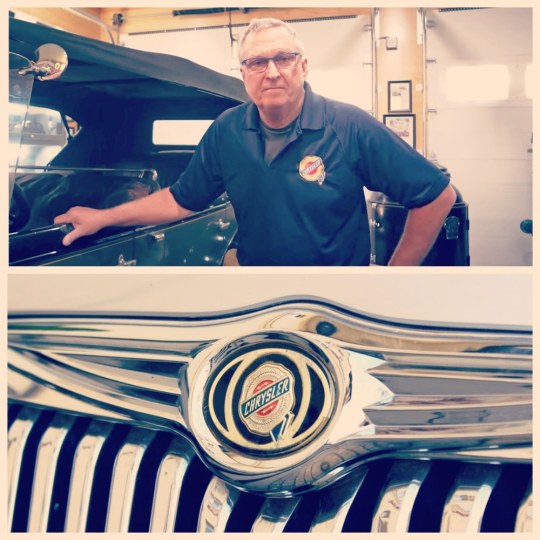
🇺🇸 As we approach Chrysler's 100th anniversary, Frank B. Rhodes Jr., great-grandson of company founder Walter P. Chrysler, is raising concerns about the brand’s future and wants to take action to rescue it. In a recent open letter to “investors and workers,” Rhodes announced his plan to revitalize Chrysler and its related brands—Dodge, Ram, and Jeep—under new “American” ownership.
🚗 Stellantis, the current parent company of Chrysler, has come under criticism from Rhodes for its management of the brand, which he claims has been severely neglected. The Chrysler brand currently offers only one vehicle, the Pacifica minivan, while several promising concept cars, such as the Chrysler Airflow, were shelved before reaching production. Rhodes highlighted Stellantis’ focus on European brands like Citroën and Peugeot, arguing that Chrysler has been left behind.
💼 Rhodes, who has been a Chrysler ambassador for over 40 years, points to his family’s legacy and his own ownership of the final Chrysler 300C as reasons for his dedication to the brand. He submitted a 17-page proposal to Stellantis executives, inviting them to a confidential discussion on reviving Chrysler. His plan includes giving equity stakes to employees, echoing the worker-centered vision of his great-grandfather, who founded the company on principles of American ingenuity and innovation.
📉 Rhodes also expresses concern about the future of Dodge, which has focused heavily on electric vehicles (EVs) despite its core customer base being more interested in American muscle and performance cars. He argues that Stellantis’ push toward an all-electric lineup by 2028 for Chrysler is out of step with market trends, where hybrids are gaining popularity. The all-electric path, Rhodes warns, could be disastrous for the brand’s future.
🔧 Despite these challenges, Rhodes remains optimistic about the potential to rebuild Chrysler as a symbol of blue-collar luxury and innovation. He is calling for a return to American-designed and built products, and greater autonomy for Chrysler and Dodge within Stellantis. Rhodes’ ultimate goal is to rescue the brand from what he sees as poor management and ensure that Chrysler survives to celebrate its next century.
🚨 As Chrysler fans prepare for the 100th anniversary celebrations next summer, including a large event in Pennsylvania, Rhodes is urging action to prevent the brand from fading into obscurity. Without intervention, he warns, Chrysler’s future looks bleak.
#transatlantic torque#brits and yanks on wheels#companies#technology#brands#engineering#cars#tech#old cars#innovation#business and industry sectors#history#chrysler#dodge#Plymouth#walter chrysler#detroit#michigan#big three#Chrysler Motors#automotive#american auto#automobile#classic cars#car#made in usa#stellantis#fiat chrysler automobiles#american company#american car
13 notes
·
View notes
Text

🎉 October 15 marks the 100th birthday of one of the most influential figures in the automotive industry—Lee Iacocca. Born in 1924, Iacocca's visionary leadership helped shape the modern car industry and saved iconic brands from collapse.
🚗 At Ford, Iacocca was responsible for the creation of the legendary Ford Mustang, a car that became a symbol of American culture and automotive innovation. He also had a hand in the development of other iconic models such as the Ford Pinto; the luxurious Lincoln Continental Mark III; the stylish Mercury Cougar and the Ford Escort, a popular subcompact that catered to fuel-conscious drivers in the 1970s.
💼 Perhaps Iacocca's greatest achievement came when he took over Chrysler in 1978, at a time when the company was on the verge of bankruptcy. His introduction of the K-platform cars and the minivan not only saved Chrysler but also revolutionized the American car industry.
#Transatlantic Torque#brits and yanks on wheels#retro cars#transatlantic torque#vehicle#cars#old cars#brands#companies#automobile#american cars#lee iacocca#ford motor co#ford falcon#ford mustang#ford fusion#linkoln mark#mercury cougar#mercury#chrysler#dodge#Plymouth#ford escort#detroit#michigan#american auto#automotive#history#anniversary#chrysler lebaron
13 notes
·
View notes